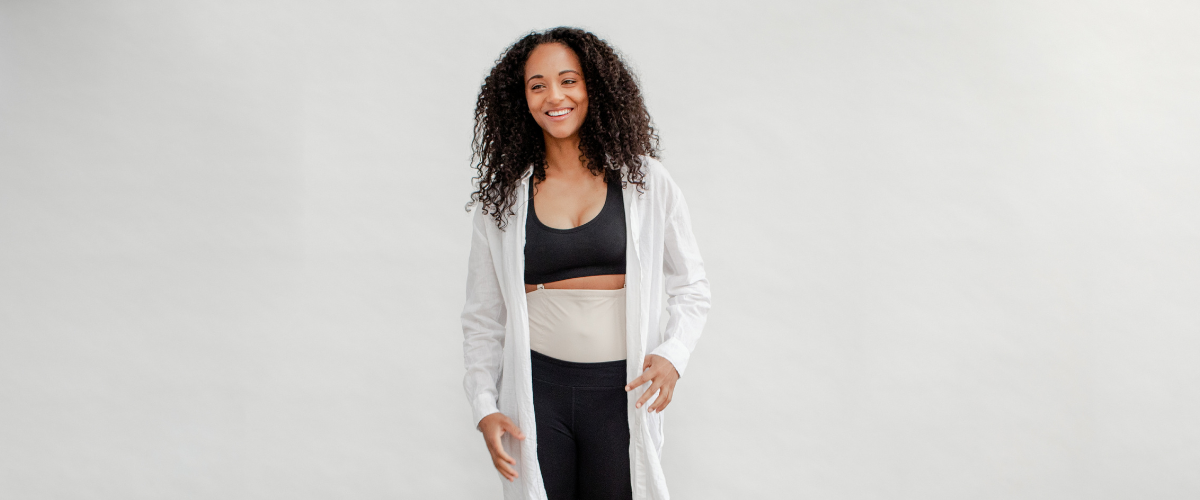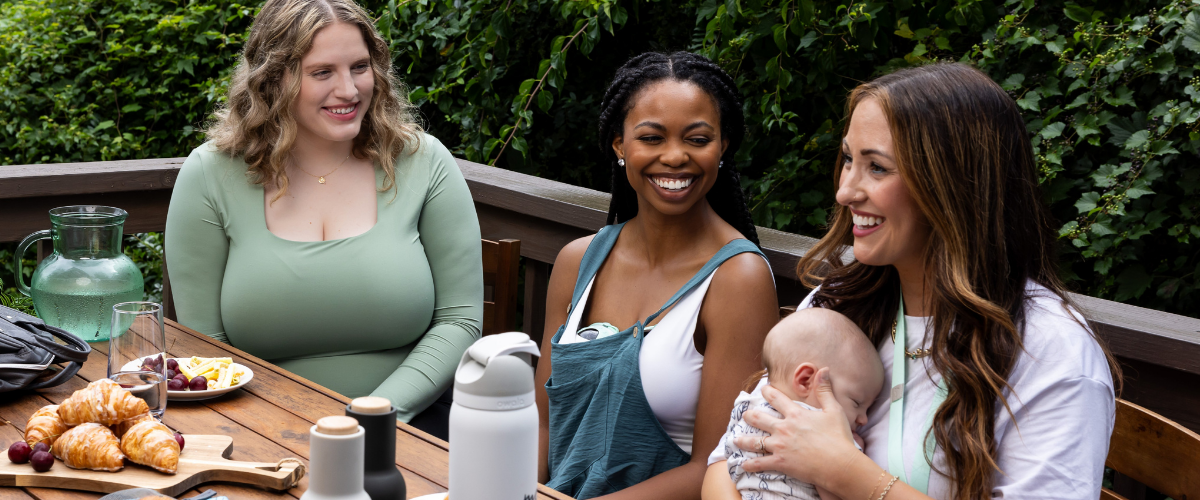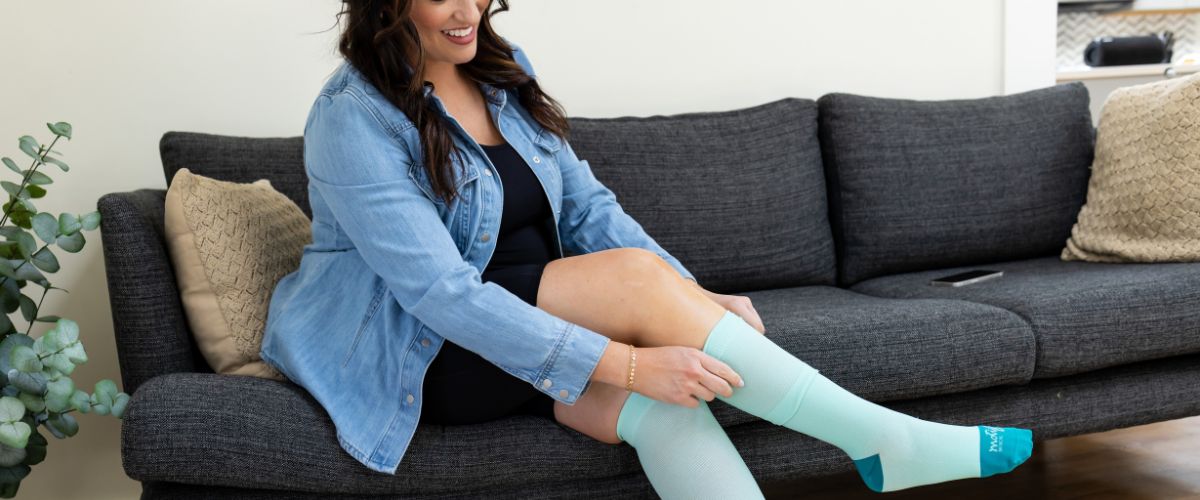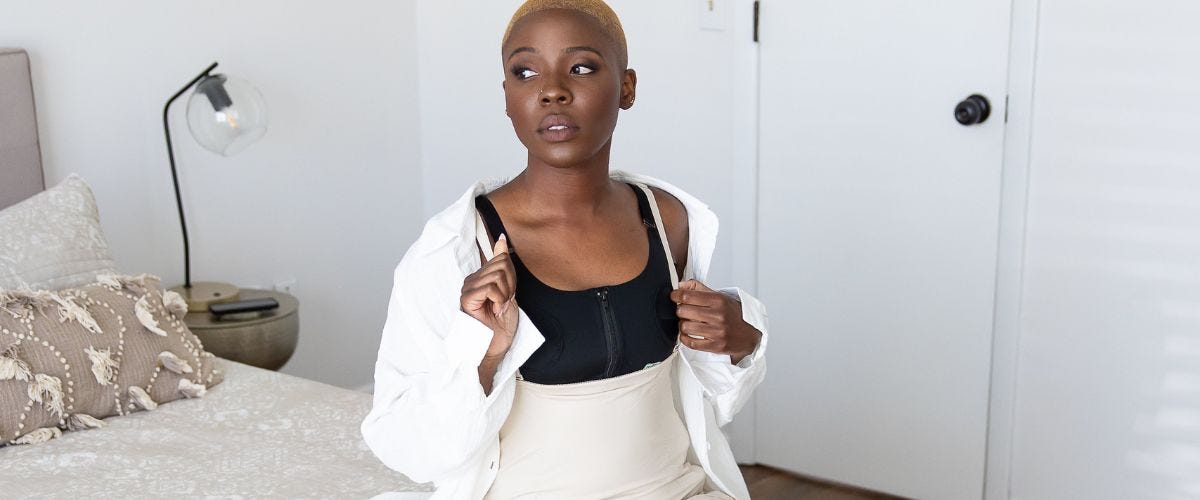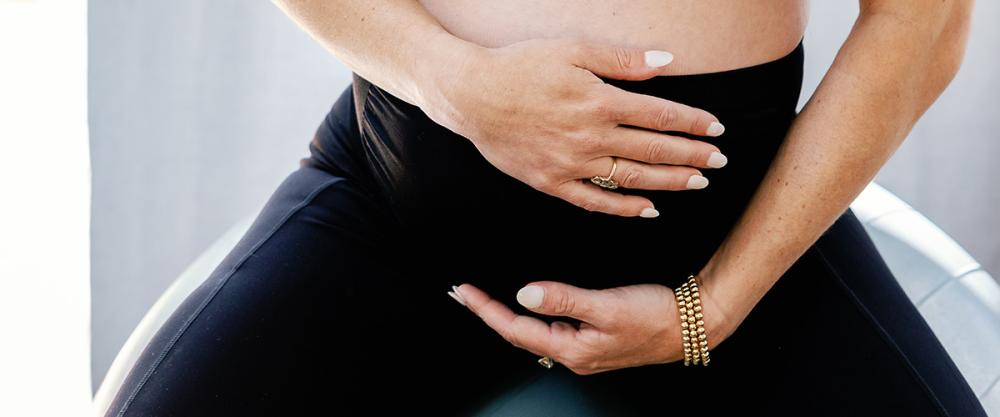Why Do You Need Postpartum Compression?
When you start looking into ways to prepare for postpartum, you might search for ideas like meal preparation and tips to get ready for feeding the baby. But let's not forget to understand how you can support your body in postpartum recovery. You will want to nourish your body emotionally and physically. There are a lot of hormonal and body changes that happen in the initial postpartum period!
One way to physically support your body is with good nutrition and hydration. When you fill your body with the nutrients it needs, it will have an easier time healing the tissues and muscles that have worked so hard during pregnancy and birth. You can also support your physical recovery by using a postpartum compression garment.
If you’re looking around online, you might wonder if postpartum recovery garments are the same thing as shapewear. If you already own a corset or body shaper, you might be tempted to wear those after the baby is born. However, I don’t recommend doing that! Postpartum compression garments are specifically designed to help your body heal after birth. Shapewear helps smooth the curves of your body—those are very different functions! To be even more specific, let’s take a closer look at five differences between postpartum recovery garments and general shapewear.
Abdominal Support vs. Tummy Sculpting
Abdominal Support
Every single woman who gives birth will experience some amount of abdominal muscle separation. This occurrence is a normal part of pregnancy! Medically speaking, this is called diastasis recti. Typically, these muscles slowly come back together over the first 3 to 4 months postpartum. In the meantime, your core is not as stable as it will be. Instability can create abdominal and pelvic discomfort when sitting upright or standing.
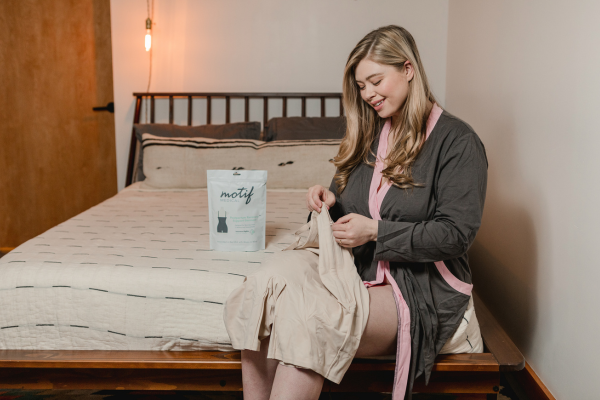

Wearing postpartum recovery garments provides compression to stabilize your core and support your pelvic floor during this healing transition after a baby is born. The gentle stabilization these garments give can help you be more comfortable as you sit down, stand, and move around. Even while your core and pelvic floor are working to get stronger again!
Tummy Sculpting
On the other hand, shapewear garments are not designed to stabilize your core. Instead, the clothing is created to smooth your curves. Smoother curves are great for a night out, but not what your body needs during postpartum. For your abdominal muscles to regain their strength after birth, they need to be allowed to do some of the work. Additionally, as your organs settle back down into your abdomen, they need space. Wearing shapewear constricts that space too much. Making it harder for your organs to comfortably settle into their correct place. Rather than supporting and helping ease your recovery, shapewear tends to increase discomfort by increasing pressure up on your lungs or down on your pelvic floor--and it can even contribute to intestinal discomfort!
Pelvic Support vs. Side Slimming
Pelvic Support
Your pelvic floor works hard during pregnancy and birth. It spends 9 months holding all of the weight of your growing baby and if you have a vaginal birth, those same strong muscles have to stretch to allow the baby to pass through. Needless to say, they’re tired after birth! One beneficial function of a postpartum compression garment is that it supports your pelvic floor as you stand and move around. The compression it provides allows your muscles to ease back into their normal workload, instead of being required to hold up all of the downward pressure it experiences every day.
Side Slimming
Shapewear isn’t designed to provide any support for your pelvic floor and because its purpose is to compress your abdomen, shapewear can increase the pressure that is put on your pelvic floor. This can slow down your pelvic floor recovery!
The additional workload isn’t helpful in the postpartum and can also lead to pelvic organ prolapse, so you certainly want to avoid that!
Good Posture vs. Smooth Silhouette
Good Posture
Toward the end of pregnancy, your body starts preparing for birth by relaxing the connective tissue and ligaments in your pelvis and pelvic floor. This increased mobility in your hips and SI joint makes it easier for the baby to navigate the space in the pelvis during delivery, but in the postpartum, it can lead to poor posture, and low back and hip pain.
The compression provided by a postpartum garment supports these joints to increase their stability and help you maintain good alignment while you are feeding your baby and returning to your daily activities. This type of core support can also help you maintain functional movement patterns, even while your joints have extra mobility.
Smooth Silhouette
A shapewear garment doesn’t provide these same structures and support. The purpose of shapewear is to smooth your silhouette, not to help you have proper posture, so it won't benefit you in the same way. Additionally, most shapewear garments don’t fully support the hips and pelvic bones, so they won’t provide the stability you’ll want when you’re moving around.
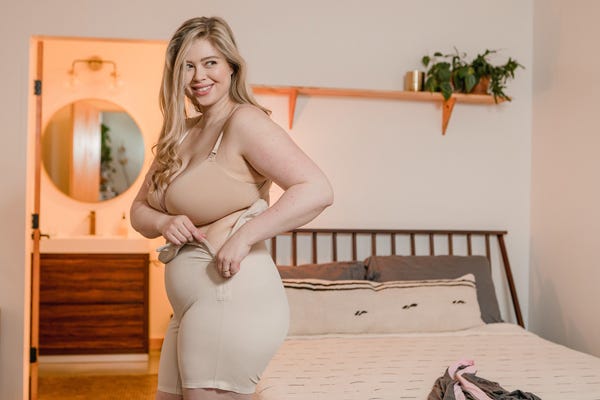

Long-term Help vs. Temporary Effects
One of the most important benefits of using a postpartum garment during your recovery period is that it will help you have a smooth and straightforward postpartum period. The use of postpartum compression can help reduce postpartum bleeding, rebuild a strong core, improve posture, and reduce the overall aches and pains that new moms fee
A postpartum recovery garment is created for the express purpose of helping your body heal after pregnancy and birth, but body shapers, corsets, and other shapewear are made just to smooth your curves. Shapewear doesn’t provide any long-term healing benefits like postpartum compression does. And don’t fall for the lie that women should “bounce back” after giving birth. Your body just did an absolutely amazing feat—you grew a whole new person inside of you! Show your body the respect and love it deserves by giving it support instead of trying to make it fit into someone else’s idea of what a body should look like
Insurance Coverage or Out-of-Pocket
Perhaps the best reason of all to use postpartum compression instead of shapewear is this: postpartum recovery garments can be covered by insurance! If you aren’t sure if this is something your insurance company provides, use this simple tool to look up your provider and check out your coverage options. If your insurance company doesn’t currently provide this option, write them a letter and let them know you want it! Your voice can make a difference and help provide this healing device so that all new mothers can thrive in the postpartum.
Information provided in blogs should not be used as a substitute for medical care or consultation.


